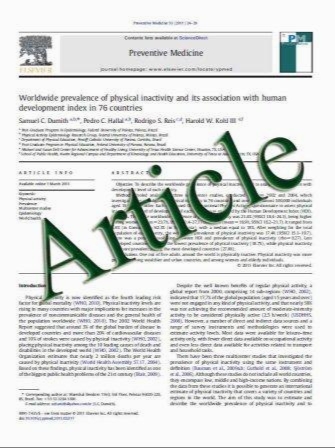Oral contraceptive use and bone mass in women aged 26–36 years
- نوع فایل : کتاب
- زبان : انگلیسی
- مؤلف : S. Wei & G. Jones & R. Thomson & T. Dwyer & A. Venn
- چاپ و سال / کشور: 2010
Description
Introduction The association between hormonal contraceptive use and bone mineral density remains controversial. Hypothesis Hormonal contraceptive use is positively associated with bone mass in young premenopausal women. Methods Cross-sectional analysis of data collected from women aged 26–36 years (n=687) in the Childhood Determinants of Adult Health study—a longitudinal study investigating childhood determinants of cardiovascular disease, diabetes, and other chronic diseases in adulthood. Participants were not currently pregnant or breast-feeding. Contraceptive use was obtained by self-administered questionnaire. Women were categorized as combined oral contraceptive users (n=219), progestogen-only contraceptive users (n=43), and non-users of hormonal contraceptives (n= 425). Bone mass was measured by quantitative ultrasound. Results Compared with women who were not using any hormonal contraceptives, women using combined oral contraceptives had significantly higher values of broadband ultrasound attenuation (BUA), speed of sound, and quantitative ultrasound index. These associations remained after adjustment for confounders. Progestogen-only contraceptive users had higher BUA than non-users, but the differences were not statistically significant in this small group. Conclusion Combined oral contraceptive use was associated with higher bone mass measured by quantitative ultrasound in this population-based sample of premenopausal women aged 26–36 while progestogen-only contraceptives appeared to have no deleterious effect on bone mass.
Osteoporos Int (2011) 22:351–355 DOI 10.1007/s00198-010-1180-y Received: 18 August 2009 / Accepted: 6 January 2010 / Published online: 27 February 2010


